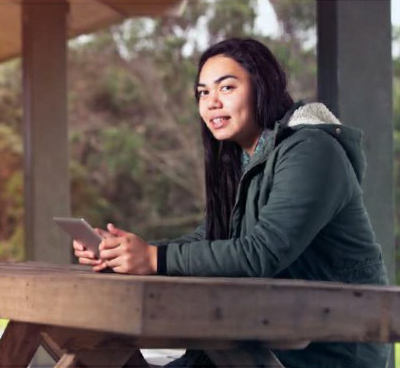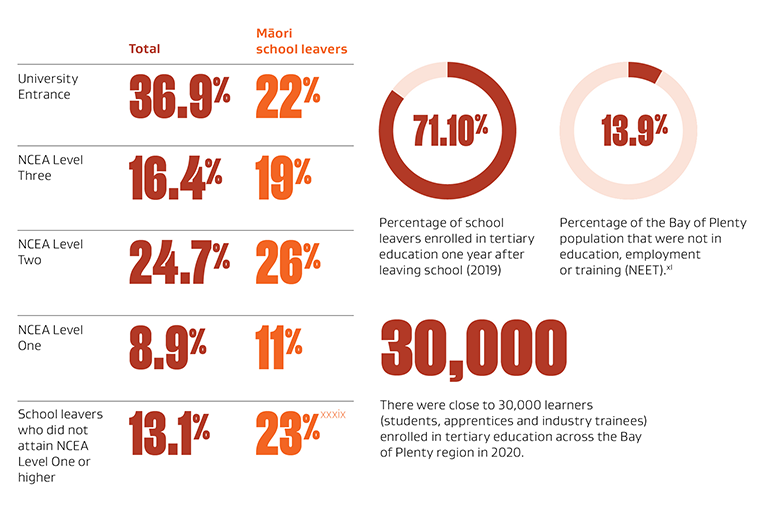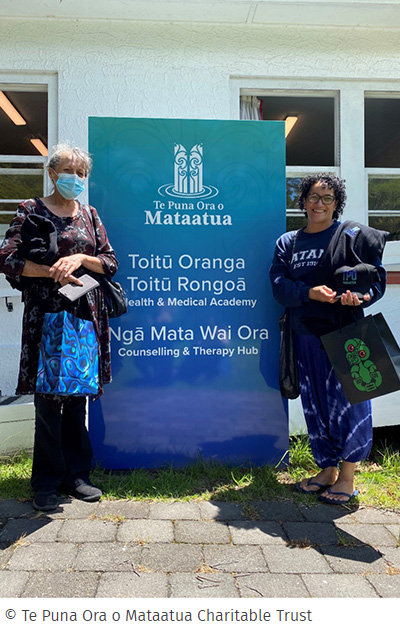Education
On this page
 Bay of Plenty residents can participate in flexible education and training, that transcends location and personal circumstance barriers and that connects with the needs of whānau and community.
Bay of Plenty residents can participate in flexible education and training, that transcends location and personal circumstance barriers and that connects with the needs of whānau and community.
The Bay has communities spread across a large geographical area with four major centres and many smaller towns. The region therefore needs an education system fit for purpose against the backdrop of this diverse and wide-ranging geography, with local or digitally enabled delivery (in line with our Technology aspiration) and wrap-around support such as community based pastoral care and mentoring. Alongside a better delivery model the region needs training that can be delivered through micro credentials. Training should connect up the aspirations of employers and rangatahi and those re-training to on-ramp into employment.
In 2020, there were over 63,000 students enrolled in state/state-integrated schools. The highest educational attainment of school leavers in 2020 is detailed in the below graphic:

Image description
Our approach
While developing its approach, the Group considered the various national education system reforms in play, as well as the work of BOP-specific education strategies.[30]
Key insights
The Education Counts 2020 student achievement summary for Bay of Plenty shows a clear disparity between educational experiences for learners in the Western Bay of Plenty region versus the Eastern Bay, and in higher-education participation rates for non-Māori versus Māori school leavers.[31]
For Māori school leavers who do enrol in tertiary, they are more likely to go to Private Training Establishments, Universities and targeted training. At tertiary institutions, Māori are more likely to study Level 1 – 3 tertiary courses and study Mixed Field and/or Society and Culture. If Māori school leavers enter the workforce from school, they are more likely to enter low-skilled occupations in retail and tourism which have been vulnerable to COVID-19 lockdowns and border closures.
Addressing the disparities in educational outcomes for residents across the Bay requires a review across the education system, and the necessary learner-journey data to shape such a review.
In the compulsory education sector, the Ministry of Education noted that while there is a good overall supply of teachers, there continues to be shortages of Mathematics, Science, Physics, Te reo Māori, and Hard Materials Technology teachers.[32] There is an opportunity to address these shortages by recruiting people with workforce experience, with the Ministry of Education supporting their postgraduate teaching qualification.[33] Recruiting more teachers with workforce experience also addresses the demand for more contextual, ‘real-world’ learning in the classroom. Stakeholders told the Group that careers counsellors were over-worked and under-resourced, with many students feeling ill-prepared for their next steps. With this approach, more learners would be better informed about potential pathways into higher education, training and employment choices within these subject areas.
Pre-COVID, international education was the fifth largest export sector for New Zealand. Valued at $5.23bn in 2019, 4% of total enrolments were held in the Bay. This represents not only tuition fees but also expenditure by international students that supported over 48, 832 jobs nationally. Just as importantly, international students play a significant role in supporting global citizenship within the Bay of Plenty. With New Zealand’s borders reopening, this represents a significant opportunity for the Bay, and supporting the reinvigoration of the international education sector will be a priority.[34]
Key challenges faced by residents entering the workforce are cultural readiness of workplaces, youth-readiness of employers and the work-readiness of employees. Education stakeholders shared the positive impact of place-based mentoring and pastoral care initiatives in helping to address these issues. The success of these initiatives was particularly evident when led by community champions who were actively engaging with local schools, whānau, hapū, iwi and employers. Increasing the provision of high quality and impactive programmes like these across the Bay is strongly supported.
Tertiary provision in the following areas were identified as needing to be reviewed to ensure current provision was meeting regional needs. These areas included:
- Engineering skills (mechanical and megatronics engineering, particularly at a vocational/technician level) to support the region’s growing manufacturing, transport and logistics sectors.
- Entrepreneurship and general business training within a broad range of regional training programmes.
- ICT/technology skills.[35]
These areas of focus are not reflected in the qualifications being completed in 2019-2020:

The Bay of Plenty is a wide geographical area with some towns more isolated than others. This has had an impact on access to and participation in education, training and employment. While residents in the main centres benefit from a wide variety of training and tertiary education options, current provision struggles to meet rural area needs. To help close the gap, tertiary education providers need to consider more innovative and responsive methods of delivery such as micro-credential qualifications delivered in a place-based or satellite format.
For these innovations to be fully utilised, fundamental barriers must be considered. Driver licencing and cost of digital connectivity have wide-reaching impacts but are acutely felt by residents in rural areas and in high deprivation communities. Further investment is needed in technological infrastructure, both in terms of internet provision and access to devices. Lack of affordable childcare is another barrier, most frequently impacting the education, training and employment outcomes of Māori and young women.[36] This is consistent with lower enrolment rates in early childhood education and care for Māori children.[37] Overcoming these barriers should be a priority for improving the educational, training and employment outcomes of the communities most in need.
The sentiments shared in Bay of Plenty Tertiary Intentions Strategy on the future of education still hold true today. Delivery of education, training and transition support services will need to reflect and respond to the different challenges faced by residents in the sub-regions, while still working towards an agreed region-wide vision. Through collaborative leadership, these challenges can be converted to opportunities so that education is enabling the health, wealth and happiness of BOP communities.
Case study: Toitū Hauora Toitū Rongoa

Whāngaia ka tipu, ka puāwai. That which is nurtured, blossoms and grows
The largest Māori provider across the Bay of Plenty, Te Puna Ora o Mataatua is renowned for responding to the needs of Mataatua rohe and is committed to providing pathways into employment areas such as Nursing and Advanced Nursing (Practitioner), Midwifery, Counselling, Tōhunga Rongoa, Therapy, Mental Health, Health Diagnostics, Health Promotion, Health Administration, Healthcare Assistance, Homebased Support and ACC Support Work and Caregiving.
Toitū Hauora Toitū Rongoa, Health & Medical Academy is a direct pathway to these opportunities, specialising in education and employment services.
A bespoke whānau ora-based plan is made for every tauira, removing all barriers to quality healthcare education and employment. This wrap-around support, along with the service’s collaboration with trusted tertiary and employment agencies allow tauira to either find tertiary or employment placement and flourish in their selected vocation.
Education action statements
- The Group helps to coordinate a connected approach to education provision in the Bay of Plenty.
- Support place-based transition programmes that pathway residents from education to training, employment or higher education.
- Remove barriers to accessing education and training in the Bay of Plenty.
Footnotes
[29] | Bay of Plenty Region – School leaver’s attainment(external link) — Education Counts
[30] | Including:
Bay of Plenty Labour Market Strategy 2018 – 2021 [PDF broken link](external link) —
Bay of Plenty Tertiary Intentions Strategy 2014 – 2019 [PDF broken link](external link) —
He Mauri Ohooho [PDF, 7.1MB](external link) —
[31] | Bay of Plenty Region – School leaver’s attainment(external link) — Education Counts
[32] | 2020/21 Education sector annual reviews: Report of the Education and Workforce(external link) — Ministry of Education
[33] | 2020/21 Education sector annual reviews: Report of the Education and Workforce(external link) — Ministry of Education
[34] | 2019 Economic Contribution and Enrolments Infographic(external link) — Education New Zealand
[35] | Bay of Plenty Tertiary Intentions 2014-2019 [PDF broken link](external link) — Bay of Connections
[36] | Y-NEET: Empirical Evidence for New Zealand [PDF, 345KB](external link) — NZ Work Research Institute
[37] | Early Childhood Education, Bay of Plenty Region 2019 – 2021(external link) — Education Counts

